Fisheries and Aquaculture Journal
Open Access
ISSN: 2150-3508
ISSN: 2150-3508
Research Article - (2021)
Aquatic biodiversity and fish wealth of Kerala sustain more than 10 lakh fisher folk and supports numerous additional activities including commercial fishing, tourism, aquaculture, education, recreation etc. Species diversity, gear and craft specifications, seasonal variation of fish caught and living status and related problem accessment studies were conducted in Vembanad Lake at Varapuzha wetlands of Ernakulam district in Kerala during January 2020 to March 2021. Etroplus maculatus, E. suratensis, Stolephorus indicus, Ambassis ambassis were found to be highly abundant speciesin the research area. Out of 3105798(as per 2001; Department of Town and Country Planning, Kerala) people in Ernakulam district, percentage population involved in different types livelihood sectors were identified and recorded. Case study was conducted to understand the problems in the sector and appropriate recommendations were given.The recorded data showed that Varapuzha Lake is rich in biodiversity with a diversified range and floras and faunas.
Varapuzha wetlands; Species diversity; Seasonal variation; Gear and craft specifications
Aquatic biodiversity and fish wealth of Kerala sustain more than 10 lakh fisher folk and supports numerous additional activities including commercial fishing, tourism, aquaculture, education, recreation etc. Kerala ‘Gods own country’ is honored with 590 km of rich coastline, 44 rivers and innumerate number of water bodies which maintains an important role in natural biodiversity sustenance and occupation. Invertebrates, plants, algae and other aquatic organisms possess a wide range of habitats along the huge coastline and related waters. The stretch of coastline and inland water bodies rich with different species, worked with fishery in Ernakulam region [1]. An enormous number of individuals acquire their business by fishing and fishing related ventures. The conventional fishers of this locale having four castes chiefly ‘marakkan’, ‘aryan’, ‘valan’, and ‘mukkuvan’. Ernakulam locale is the hot bed of fishing exercises with 21 fishing villages along the coastline (Figure 1)
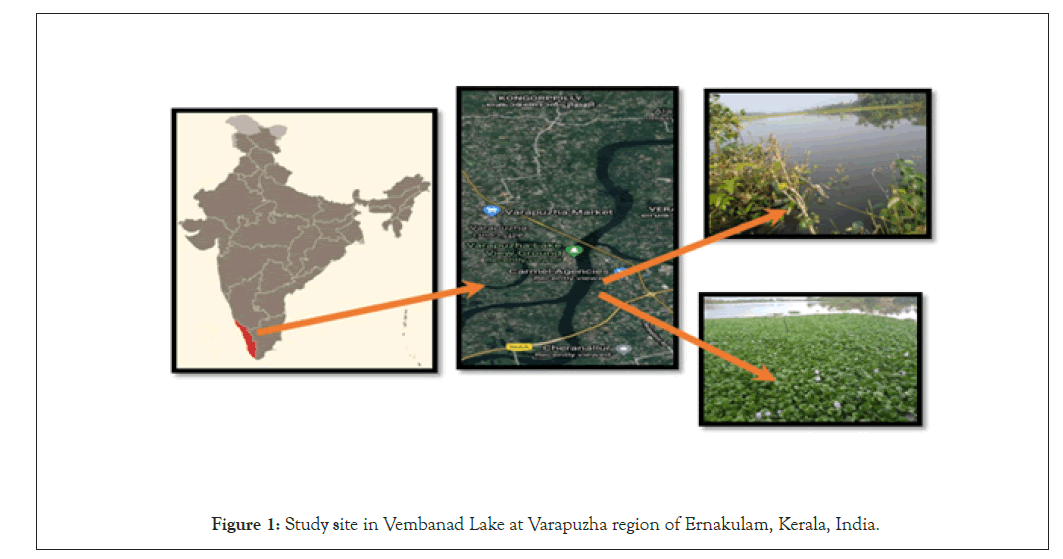
Figure 1: Study site in Vembanad Lake at Varapuzha region of Ernakulam, Kerala, India.
Vembanad Lake is a temporary ecotone lying corresponding to the Middle Eastern Ocean and incorporating mangroves, mudflats, bogs and swamps [2]. It is the breeding and spawning ground for lots of migratory birds, fishes and other related animals. Rich biodiversity and natural worth made Vembanad Lake to be recognized as a Ramsar site in November 2002. Vembanad Lake is among the most gainful life-supporting beach front wetland in Kerala, having length of 96 km and surface space of 1512 km2. Six streams bring freshwaters into Vembanad Lake and it has two lasting opening to the Middle Eastern Ocean, one at Cochin and other at Azhikode. The research area is so far witnessed by the 2019 flood which significantly reduced the species diversity and richness. High population of water hyacinth -Eichhornia crassipes (Mart.) Solms decreased livelihood of fisherwomen depended on the mussel and clam hand pickling industry. Increased population of Azolla pinnata and Nymphaea mexicana Zucc. hindered the fishing operation by ensaring inside the fishing gears and thus increased the cost of operation of fishing gears thereby consuming more and more fuels. Therefore the current study played significant role in decision making process of sustainable fisheries management and for the better framing of policies associated with.
Varapuzha (likewise known by its previous name verapoly) is a northern suburb of the city of Kochi. The semi-rural locale had 24524 to 28340 Second order settlement populations (as per 2001; Department of Town and Country Planning, Kerala). Majority of people dependent on fisheries as their primary livelihood opportunity. It is a census town in Paravur taluk, Ernakulam area in the Indian territory of Kerala arranged around 15 km from the downtown area and 8 km from Edapally. The region lies in the NH66 associating Vytilla with North Paravur. Its claim to fame is that impressively huge scope paddy developing territory is arranged western piece of Varapuzha which is called Devaswampadam. Specific with pokkali paddy development and break crop as fish development privately called ‘kettu’. Varapuzha fishing town is one of the significant fishing habitats of Ernakulam region with thorough fishing action, nearness to potential fishing grounds and great street network (Figure 2).
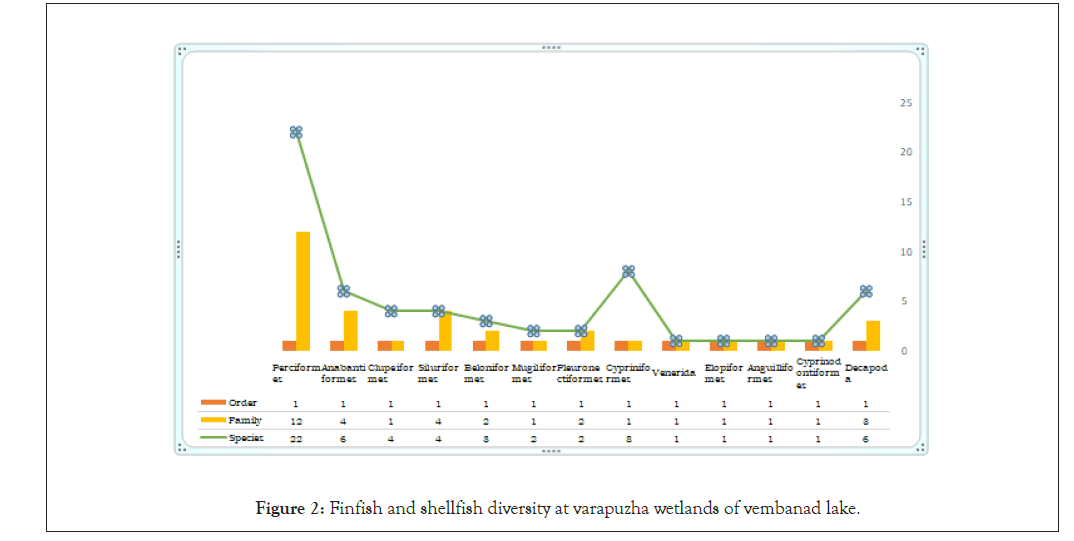
Figure 2: Finfish and shellfish diversity at varapuzha wetlands of vembanad lake.
Fishes were collected from Varapuzha wetlands of Vembanad Lake with the help of local fisherman using different types of nets like gill net, chinese dip net, hand picking, drag net, cast net and hooks at the regular intervals from January 2020 to March 2021 [3]. Varapuzha fish market fish stock assessment were conducted during the year. Details of fishing gears and craft were collected and diagrammatically represented according to FAO guidelines. Market value of fishes being sold were recorded and labelled in Table 1.
| Order | Family | Species | Common name | Abundance | Habi | MaxMax.length TL (cm) | Market price Rs./kg | |||
|---|---|---|---|---|---|---|---|---|---|---|
| Oct to Jan | Feb to May | June to Sept | ||||||||
| Perciformes | Pristolepidae | Pristolepis rubripinnis Britz Kumar | leaffish | no | yes | no | F | 13.6 | __ | |
| Leiognathidae | Leiognathus dussumeiri (Valencienne ,1835) | dussumier's ponyfish | yes | no | yes | B,M | 14 | 90- 155 | ||
| Leiognathus equulus (Forsskal, 1775) | Common ponyfish | yes | yes | yes | F,B,M | 28 | 100-150 | |||
| Eubleekeria splendens (Cuvier, 1829) | Splendid ponyfish | no | yes | no | B,M | 17 | 90-175 | |||
| Photopectoralis bindus (Valenciennes ,1835) | Orangefinned ponyfish | no | yes | no | B,M | 11 | 110- 185 | |||
| Leiognathus brevirostris (Valenciennes, 1835) | shortnose ponyfish | yes | yes | yes | B,M | 13.5 | 70- 200 | |||
| Deveximentum insidiator (Bloch, 1787) | pugnose ponyfish | yes | yes | no | M,B | 10.5 | 135- 220 | |||
| Gazza minuta (Bloch 1795) | Silver Bellies | no | yes | no | M,B | 14 | 200-230 | |||
| Cichlidae | Pseudetroplus maculatus (Bloch,1795) | orange chromide | yes | yes | no | F,B | 9.5 | 100-150 | ||
| Etroplus suratensis (Bloch, 1790) | pearl spot | no | no | yes | B | 40 | 400-700 | |||
| Oreochromis mossambicus (Peters, 1852) | Mozambique Tilapia | Rare | F,B | 39 | 150-200 | |||||
| Oreochromis niloticus (Linnaeus, 1758) | Nile Tilapia | Rare | F,B | 60 | 120-200 | |||||
| Ambassidae | Ambassis ambassis (Lacepede, 1802) | Commerson's Glassy | yes | yes | yes | F,B,M | 15 | 40-75 | ||
| Parambassis sp. | Glassfish | yes | yes | yes | F,B | 17.5 | 45-80 | |||
| Gerridae | Gerres limbatus Cuvier, 1830 | saddleback silver biddy | yes | yes | yes | B,M | 15 | 50-90 | ||
| Carangidae | Caranx ignobilis (Forsskål 1775) | Giant trevally | no | yes | no | B,M | 170 | 180- 600 | ||
| Glossogobidae | Glossogobius giuris (Hamilton, 1822) | Tank goby | yes | no | yes | F,B,M | 50 | 150-175 | ||
| Lethrinidae | Lethrinus sp. | emperor fish | no | yes | no | B,M | 52 | 140-400 | ||
| Lutjanidae | Lutjanus argentimaculatus (Forsskal,1775) | mangrove red snapper | no | yes | yes | F,B,M | 150 | 150-250 | ||
| Scatophagidae | Scatophagus argus (Linnaeus, 1766) | Spotted scat | no | yes | yes | F,B,M | 38 | 100-145 | ||
| Sillaginidae | Sillago sihama (Forsskål 1775) | Silver sillago | no | yes | no | B,M | 31 | 150-350 | ||
| Sciaenidae | Johnius dussumieri (Cuvier 1830) | Sin croaker | no | yes | no | B,M | 40 | 180-340 | ||
| Anabantiformes | Anabantidae | Anabas testudineus (Bloch 1792) | climbing perch | yes | no | no | F,B | 25 | 125-235 | |
| Channidae | Channa striata (Bloch, 1793) | Striped snakehead | yes | no | yes | F,B | 100 | 345-450 | ||
| Channa marulius (Hamilton 1822) | Great snakehead | yes | no | yes | F | 183 | 280-400 | |||
| Channa punctata (Bloch, 1793 | Spotted Snakehead | Rare | F,B | 31 | 325-420 | |||||
| Heteropneustidae | Heteropneustes fossilis (Bloch 1794) | Stinging catfish | no | no | yes | F,B | 31 | 450-600 | ||
| Nandidae | Nandus nandus (Hamilton, 1822) | Gangetic Leaffish | Less seen | F,B | 20 | 125-200 | ||||
| Clupeiformes | Clupeidae | Thryssa malabarica (Bloch, 1795) | Malabar thryssa | no | no | yes | B,M | 17.5 | 75-110 | |
| Stolephorus indicus (Van Hasselt, 1823) | Indian anchovy | no | no | yes | B,M | 15.5 | 200-330 | |||
| Anodontostoma chacunda (Hamilton, 1822) | Chacunda gizzard shad | no | yes | no | F,B,M | 22 | 75-110 | |||
| Nematalosa nasus (Bloch, 1795) | Bloch's gizzard shad | no | yes | no | F,B,M | 25.5 | 90-190 | |||
| Siluriformes | Mystidae | Mystus malabaricus (Jerdon 1849) | Jerdon's Mystus | no | no | yes | F,B | 15 | 80-110 | |
| Ariidae | Arius maculatus (Thunberg, 1792) | Spotted sea catfish | no | yes | no | F,B,M | 80 | 95-175 | ||
| Siluridae | Ompok malabaricus (Valenciennes, 1840) | Goan catfish | no | yes | no | F | 51 | 135-200 | ||
| Bagridae | Horabagrus brachysoma (Günther, 1864) | Günther's catfish | no | yes | yes | F,B | 45 | 50-100 | ||
| Beloniformes | Hyporhamphidae | Hyporhamphus xanthopterus (Valenciennes, 1847) | Red-Tipped Half Beak | Rare | F,B,M | 15 | 150-255 | |||
| Hyporhamphus limbatus (Valenciennes 1847) | Congaturi halfbeak | no | yes | yes | F,B,M | 35 | 135-245 | |||
| Belonidae | Xenentodon cancila (Hamilton 1822) | Freshwater garfish | no | yes | yes | F,B | 40 | 150-300 | ||
| Mugiliformes | Mugilidae | Mugil cephalus Linnaeus 1758 | Flathead grey mullet | no | yes | no | F,B,M | 100 | 140-450 | |
| Liza tade (Forsskål, 1775) | Green back mullet | yes | yes | yes | F,B,M | 70 | 125-400 | |||
| Pleuronectiformes | Cynoglossidae | Cynoglossus macrostomus Norman, 1928 | Malabar tonguesole | yes | yes | no | B,M | 30 | 100-120 | |
| soleidae | Brachirus orientalis (Bloch & Schneider, 1801) | Oriental sole | yes | no | yes | F,B,M | 38 | 250-355 | ||
| Cypriniformes | Cyprinidae | Dawkinsia ï¬lamentosa (Valenciennes, 1844) | Black-spot barb | no | yes | yes | F,B | 18 | Ornamental importance | |
| Gibelion catla (Hamilton 1822) | Catla | no | yes | no | F,B | 182 | ||||
| Puntius sarana (Hamilton, 1822) | Olive barb | yes | yes | yes | F,B | 42 | ||||
| Puntius mahecola (Valenciennes, 1844) | Mahecola barb | no | yes | yes | F | 8.9 | ||||
| Amblypharyngodon melettinus (Valenciennes, 1844) | Attentive Carplet | yes | yes | yes | F | 8 | ||||
| Labeo dussumieri (Valenciennes, 1842) | Labeo | no | yes | yes | F | 50 | 250-320 | |||
| Labeo rohita (Hamilton, 1822) | Rohu | Rare | F,B | 200 | 240-280 | |||||
| Puntius amphibius (Valenciennes, 1842) | Scarlet Banded Barb | Less seen | F | 20 | ornamental | |||||
| Venerida | Cyrenidae | Villorita cyprinoides Gray 1825 | Black clam | yes | yes | __ | F,B | __ | 120-190 | |
| Elopiformes | Megalopidae | Megalops cyprinoides (Broussonet, 1782) | Indo- pacific tarpon | yes | yes | yes | F,B,M | 150 | 150-280 | |
| Anguilliformes | Anguillidae | Anguilla bicolor (McClelland, 1844) | Short-Fin Eel | Rare | F,B,M | 123 | 275-390 | |||
| Cyprinodontiformes | Aplocheilidae | Aplocheilus lineatus (Valenciennes, 1846) | Striped Panchax | Moderately seen | F,B | 10 | ornamental | |||
| Decapoda | Penaeidae | Penaeus indicus Milne- Edwards, 1837 | Indian white prawn | Rare | B | 18.4 | 280-400 | |||
| Penaeus monodon Fabricius, 1798 | Giant tiger prawn | Rare | B | 33.6 | 350-450 | |||||
| Metapenaeus monoceros(Fabricius,1798) | Speckled shrimp | Moderately seen | B | 15 | 250-300 | |||||
| Palaemonidae | Macrobrachium rosenbergii (De Man,1879) | Giant fresh water prawn | Moderately seen | F,B | 34 | 455-700 | ||||
| Macrobrachium idella (Hilgendorf, 1898) | Freshwater Prawn | Less seen | F | 33 | 455-700 | |||||
| Portunidae | Scylla serrata (Forsskål, 1775) | Giant Mud Crab | Less seen | B | 28 | 300-750 | ||||
Habitat: F- Fresh water, B- Brackish water, M- Marine; Monsoon: June–September; Post-monsoon: October–January; Pre-monsoon: February–May. Absence represented by No and presence represented by Yes
Table 1: Finfish and Shellfishes Diversity with market trend in the Vembanad Lake at Varapuzha region of Ernakulam, Kerala.
Table 1: Finfish and Shellfishes Diversity with market trend in the Vembanad Lake at Varapuzha region of Ernakulam, Kerala.
Fishes of appropriate size were collected and identified with the help of FAO catalogue and then preserved in formalin solution after gutting procedure. Fishes were carefully stored in transparent glass jars and were addressed with species name, genus name, place of caught, date of caught, time of caught, market price etc. Variation in day time and night time fishing was investigated and properly recorded.
Ernakulam District is situated nearly at the center of Kerala State and on the bank of the Arabian sea. It has credit of being the monetary operational hub of the State. It is the most mechanically progressed and thriving district of Kerala contrasted with other districts. The district has 15 Block Panchayats, eight municipalities and one City Enterprise/Municipal corporation. The locale is isolated into three clear cut parts-highland, midland and lowland comprising of slopes and timberlands, fields and the seaboard separately. 20% of the absolute territory is lowland area. A part of the Vembanad Lake falls inside the Cochin taluk [4,5]. On the northern side of the North Paravur Taluk lies the Kodungallur Kayal, and on the southern side, the Varapuzha Kayal. Absolute populace of Ernakulam Region according to 2001(Department of Town and Country Planning, Kerala) enumeration is 3105798, which is 9.75% of the complete populace of the State and the Area is set in the fourth position to the extent populace size is thought of. Decadal development in the growth rate of populace of Ernakulam Region is 10.24% according to 2001 enumeration which is more noteworthy than the average growth rate of 9.42% of the State. In view of the examination it was perceived that around half of the functioning populace in Ernakulam district was engaged with essential areas incorporates agriculture labourers, Cultivators and Livestock, Forestry, Fishing, Hunting, Plantation and mining and quarrying exercises. Around 34% were engaged with secondary sector explicitly Manufacturing, Processing, Servicing and repairs in Household industries and other household industries. Rest of 16% were under tertiary sector including Trade and commerce, Transport, storage and Communications and other administrations (Figure 3).
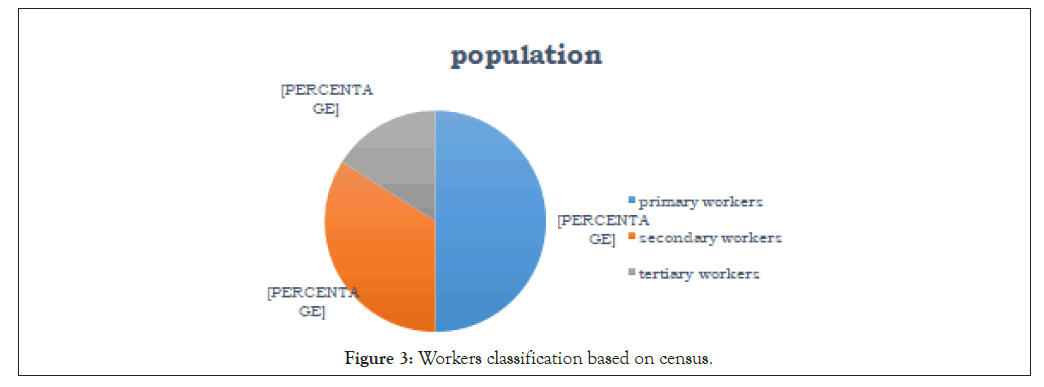
Figure 3: Workers classification based on census.
The investigation was led between January 2020 to March 2021 which gave an insight of abundant aquatic floura and fauna along the shore of Varapuzha Lake. The study uncovered that Etroplus maculatus, E. suratensis, Stolephorus indicus, Ambassis ambassis was the most abundant species of all kind. Ambassis ambassis showed higher catch per unit effort when utilizing castnet. As a part of study, visit to major inland markets especially Varapuzha- Devaswam Padam were conducted and market demand for species were consolidated on table. There was significant variation in the day time and night time fishing activities. Fishermen went for night time gill net operation were mainly caught with Horabagrus brachysoma (Günther, 1864), Penaeus indicus, Mugil cephalus (Linnaeus, 1758) etc. The catch composition is significantly influenced by the mesh size of gears used. Gill nets of mesh size 40 mm mainly caught Mugil cephalus (locally called kanambu vala) had an average weight of 2.5 kgs. Fishers set the gear in water for 10 minutes and then slowly hauled up. The floaters are placed at an interval of 55 cm usually made of plastic rings. Instead of using lead or aluminium needles as sinkers many of them were used to carry normal electric wire without copper string inside which reduce their cost of purchase [6,7]. Numerous bycatch species particularly Pseudetroplus maculatus, Glossogobius giuris, Carangoides malabaricus, Arius maculates were addressed on Kanambu vala.
Another type of gill net called ‘karimeen vala’ had a varying mesh size of 55 mm, 60 mm, 65 mm and with a total weight of 1-1.5 kgs. These net were found to be having a horizontal length of 13,200 cm. Bycatch composition of this gear were Arius maculates, Lutjanus argentimaculatus, Pseudetroplus maculatus, some of the minor shrimp species etc. and those were mainly entangled in dorsal fin,pelvic fin and gill cover regions. A well known gill net locally called as ‘njandu vala’ with a mesh size of 80 mm and weight of 1-2 kg without floats was operated during high tides of day and night time set in water for about 30-45 minutes to caught Scylla serrate (Forsskål, 1775). Popular mesh of 32 mm monofilament PA material was used to catch Penaeus indicus, Penaeus monodon, Macrobrachium rosenbergii, Metapenaeus monoceros etc. These gears were washed thoroughly with clean water to remove mud and unwanted weeds. Most of them, after cleaning with water in turn dipped the net in dilute potassium permanganate solution or copper sulphate solution or simply in salt solution to get rid of harmful bacteria’s and other faulers. Then these net were dried in shade after proper spread. The durability of these gears ranges between 1.5 to 2 years which quietly depends on the usage [8-10].
Financially one kg of these net cost around 600 rupees. Hook and line (locally called choonda) was a fishery in which a wooden pole made of dried palm( which makes it flexible during handling and can last longer) is tied with monofilament tungees. Hooks of varying size were fixed on the free end of tungees. In the usual practice these can catch fishes including Pseudetroplus maculatus, Glossogobius giuris, E. suratensis, Horabagrus brachysoma, Arius maculates and in rare cases Xenentodon cancila species too. The Chinese dip net operation was also one of the main stake fishing in which the fishers use secondary fish or shrimp attracting techniques like torch light flashing and feed spraying prior to fishing. Another kind of interesting fishing in which the fisherwomen catch fish by bare hand picking method locally called as ‘thappal’. Compared to gill net, cast net, dip net, hook and line methods fisherwomen finds a way forward to mussel culture under the supervision of Kudumbhasree units. They were also actively participated in black clam picking fishery (Figure 4).
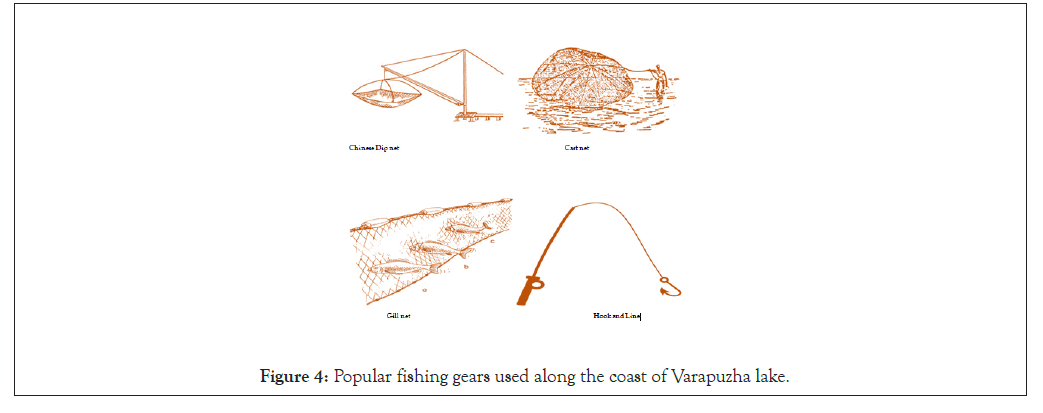
Figure 4: Popular fishing gears used along the coast of Varapuzha lake.
Cast net is another kind of gear which is made with PA monofilament material having varying mesh sizes(50 to 60 mm which used to catch Etroplus suratensis, Mugil cephalus Linnaeus, 1758, Lutjanus argentimaculatus (Forsskål, 1775), Oreochromis niloticus (Linnaeus, 1758), Horabagrus brachysoma (Günther 1864), Epinephelus diacanthus (Valenciennes 1828) etc and small mesh of 30-35 mm was used to catch shrimps like P. monodon (Tiger shrimp, locally called Kara), P. indicus (White shrimp known as Naran) etc.) showed moderate species specificity. Unpredicted climatic changes and flood in 2019 significantly reduced the rich species diversity along the coast of Vembanad Lake (Figures 5-8) [11,12].
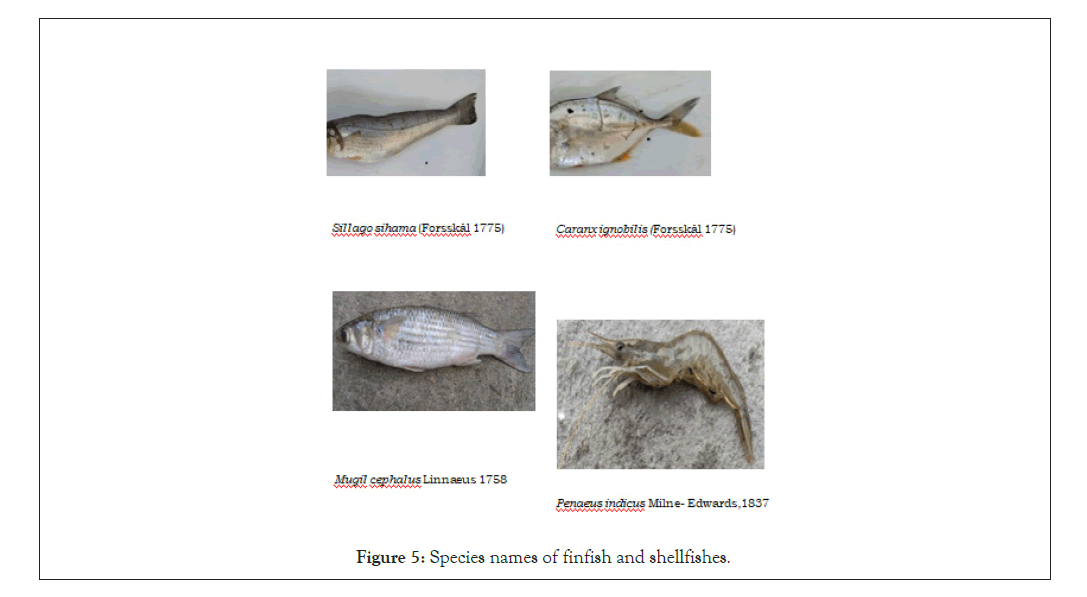
Figure 5: Species names of finfish and shellfishes.
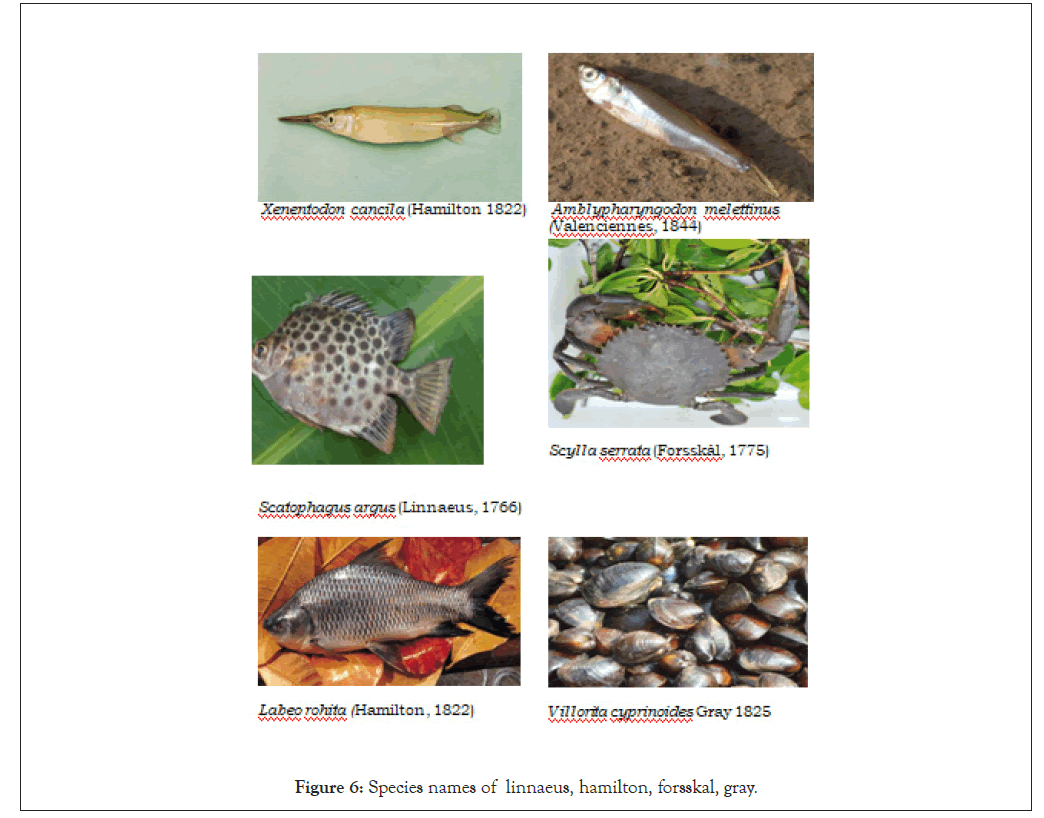
Figure 6: Species names of linnaeus, hamilton, forsskal, gray.

Figure 7: Species names of bloch 1790, bloch 1795, hamilton 1822, Schneider 1801, Linnaeus 1758, lacepede 1802.
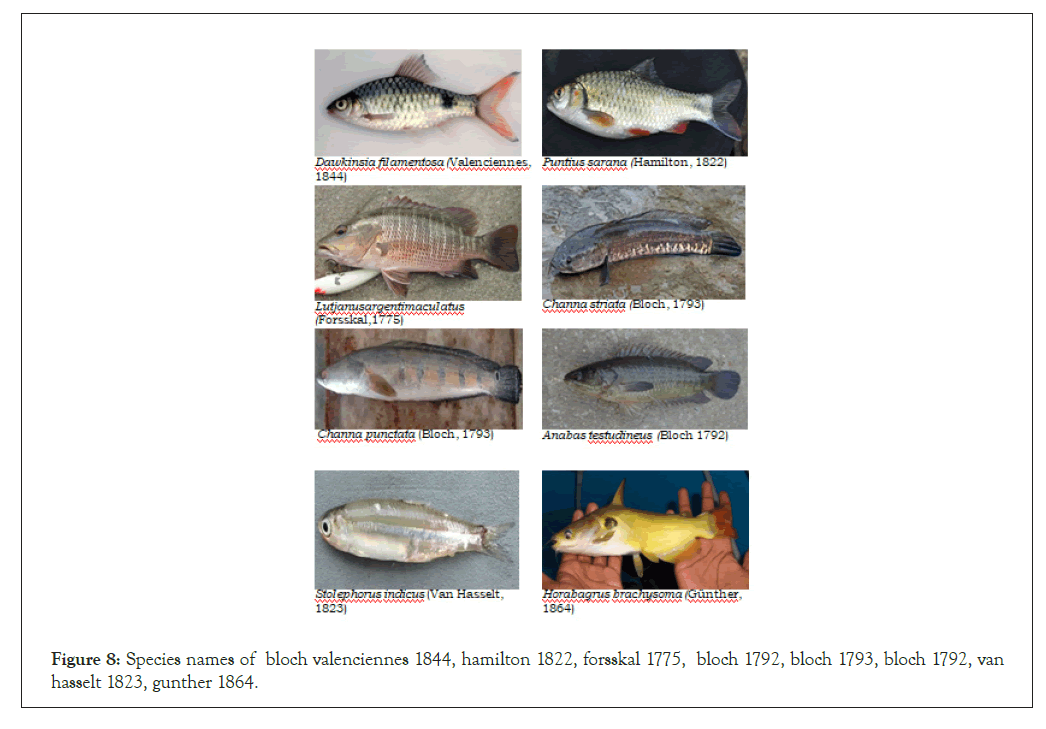
Figure 8: Species names of bloch valenciennes 1844, hamilton 1822, forsskal 1775, bloch 1792, bloch 1793, bloch 1792, van hasselt 1823, gunther 1864.
The research area was endowed with two types of fishing crafts viz. non- mechanized wooden crafts and mechanized wooden crafts. Non- mechanized wooden crafts were constructed from large wood logs. These logs are hollowed by scooping the inner portion and their bottom was thicker than the sides. These non-mechanized crafts locally called as ‘vanji’ were constructed with different types of wooden materials including wild jack( locally called Anjili), bur flower tree ( locally called as Cheeni), mango tree( locally called Maavu) and oil nut tree( locally called Punna). For the easy movement across the water body fishers used to carry 1-1.2 m long wooden paddles having wider area at bottom. Mechanized craft as the name it implies they were equipped with outboard engines having varying efficiencies of 1.5/3.5/6 HP which cost 28500/33000/65000 rupees respectively. Outboard engine of Honda and Yamaha companies were mainly dominated in the research area. In both the cases fishing craft with 6 to 7.5 meter overall lengths (LOA), maximum depth of 30 to 40 centimetres were used (Figure 9) [13].
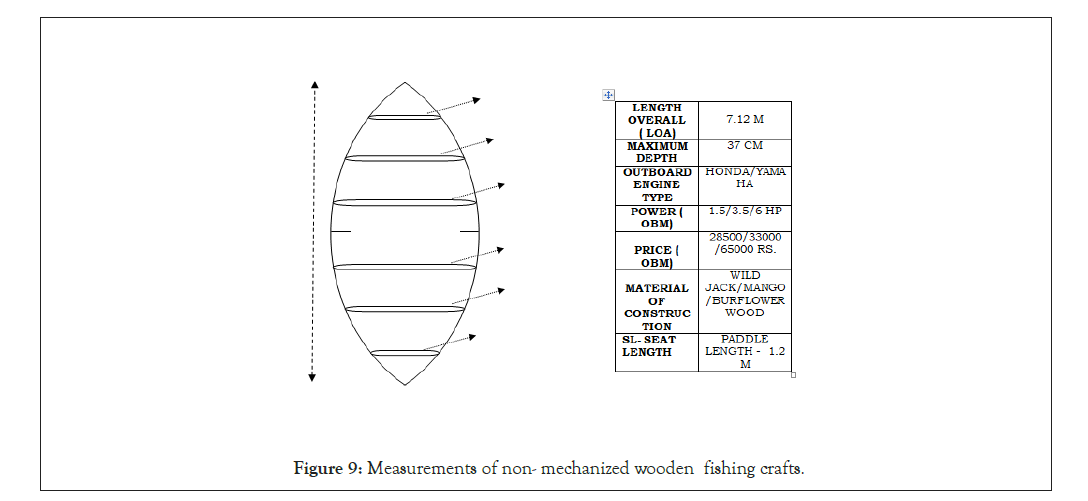
Figure 9: Measurements of non- mechanized wooden fishing crafts.
The investigation was led between January 2020 to March 2021 which gave an insight of abundant aquatic floura and fauna along the Shore of Varapuzha Lake. It had uncovered how the living status of fishers changed before and after the flood in 2019. The investigation found 61 species belonging to 13 orders and 34 families. Upon observing the fisher community, it was noted that flying of certain dragon flies near the coast shows the arrival of wind, which they locally called as ‘karakkattu’ phenomenon. They won’t go for fishing during karakkattu. Water hyacinth was the major hindrance which badly ensnaring to the gears and reduces the catch thereby increasing the fuel cost. Fishers use anti-fouling paints to prevent from the attachment of fauling organisms on the wooden canoes. There were significant change in the species diversity after the 2019 flood, but even though these data showed that Varapuzha Lake was still maintaining its aesthetic beauty with its diverse range of ichtyofaunal and floural support.
Author wish to thank the family members( Mr. Sali V A, Mrs. Girija K R, Mr. Ambady V S, Mr. Anandu VS) and Mrs. Amrutha R Krishnan(school of industrial fisheries, Cochin University of Science and Technology 682022 Kerala, India) for giving the essential facilities, and their thoughtful support and direction throughout the investigation.
The authors declare that there is no conflict of interest.
There is no funding source available.
Citation: Ajay VS (2021) Ichthyofaunal Diversity in the Varapuzha Wetlands of Vembanad Lake, Kerala, India: Comprehensive Study on the Living Status, Biodiversity Assessment and Fishing Methods. Fish Aquac J. S1: 002.
Received: 03-May-2021 Accepted: 17-May-2021 Published: 24-May-2021 , DOI: 10.35248/2150-3508.21.s1.002
Copyright: © 2021 Ajay VS. This is an open-access article distributed under the terms of the Creative Commons Attribution License, which permits unrestricted use, distribution, and reproduction in any medium, provided the original author and source are credited.